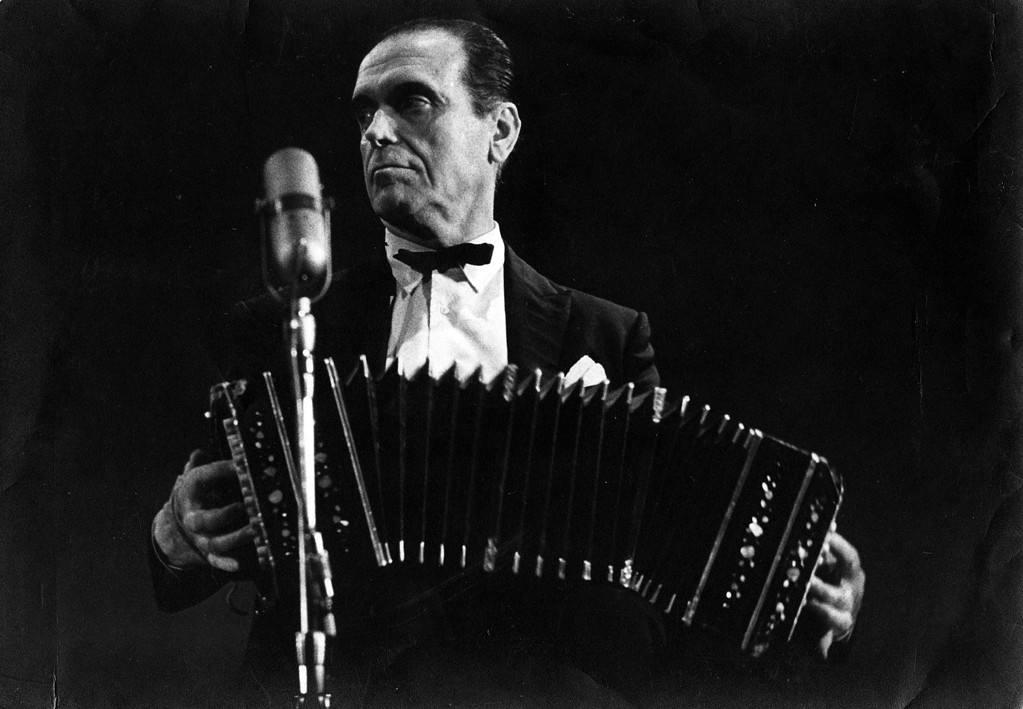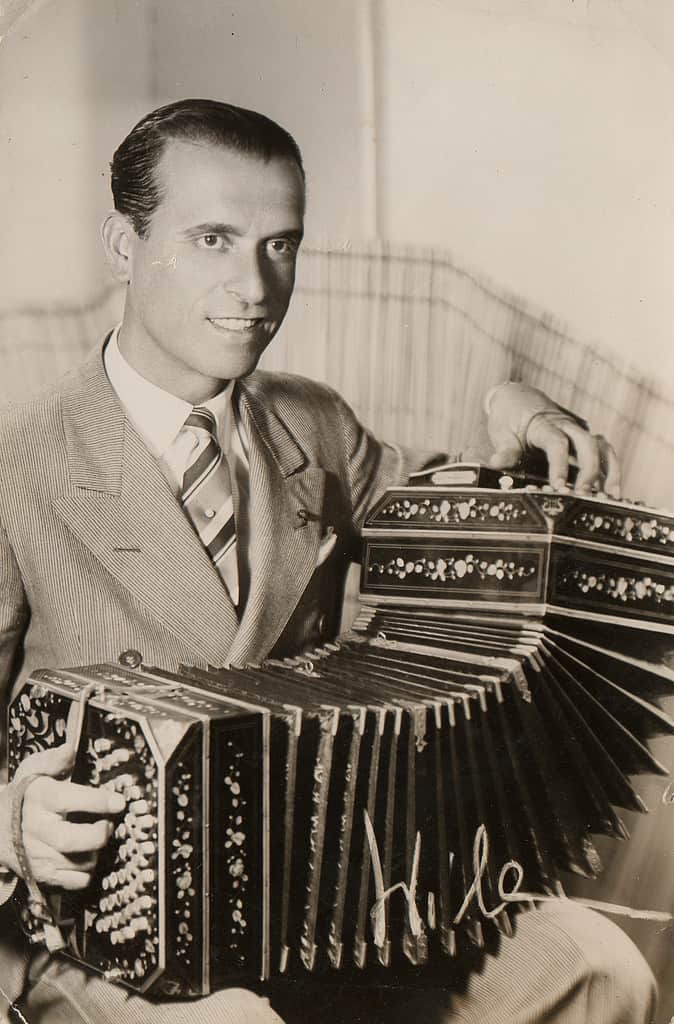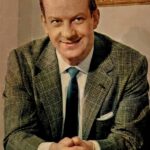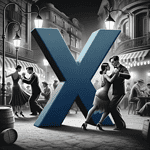If you’re passionate about Argentine Tango, you’ve undoubtedly stumbled over the restless, energetic, often frantic bandoneon tunes of Pedro Láurenz, a distinguished and highly innovative orquesta leader who took the genre and the bandoneon towards unheard levels of speed and expression. As a director, composer, and interpreter he left only a limited number of recordings, but these are cherished by all Tango DJs and Tango event organizers for their unique energy.
Beginnings
Born on October 10, 1902, in Buenos Aires, Láurenz spent his childhood in Villa Crespo. Initially drawn to the violin, he later discovered his love for the bandoneón under the influence of his older brothers. Perfecting his skills in Montevideo in 1917, he debuted professionally alongside pianist Luis Casanovas.
Returning to Buenos Aires in 1920, Láurenz became the first bandoneon of Julio De Caro, forming a formidable duo with Armando Blasco. Their collaborations, such as Lazos de Seda and Guardia Vieja, showcased their musical prowess. The duo’s artistry extended to recordings and international tours, leaving an indelible mark on the tango scene.
Formation of Orchestra Típica Pedro Laurenz
In 1934, Láurenz, alongside Blasco and others, departed from De Caro to establish his orchestra, making its debut at Café Los 36 Billares.
During the 1940s, Laurenz and his orchestra contributed immensely to the evolution of Tango, especially in the dance halls of Buenos Aires, while his recording trajectory is not quite as extensive as that of other orchestras. It was in this period that Laurenz´s vision of a distinct orchestral sound manifested, characterized by its rhythmic complexity and emotional expressiveness, making it a favorite among dancers.
Describing the characteristics of an orchestral Tango style, and subjective, and especially the unique style of Laurenz has left many authors and tango lovers in search of adequate words. A consensus seems to be on describing this bandoneón style as “cadenero” for its rhythmic precision, showcasing vibrant phrasing and emotional intensity. His compositions, including La Revancha, Sin Tacha, and Mal de Amores, demonstrated both originality and mastery, influencing future tango greats like Aníbal Troilo and Osvaldo Ruggiero.
His unique style, blending traditional Tango with innovative elements, technical brilliance, and emotional depth, provided dancers with a rich musical canvas that inspired expressive, nuanced, and individual dance interpretations and improvisations.
Several of Laurenz’s compositions and recordings stand out for their impact on the Tango dance scene:
- “Milonga de Mis Amores” – A classic piece that epitomizes the rhythm and spirit of the Milonga, a faster-paced precursor to modern Tango. This song, with its lively tempo and rhythmic patterns, remains a favorite in milongas worldwide.
- “Recuerdo” – A deeply emotional piece, “Recuerdo” is celebrated for its intricate melodies and rich harmonies, offering dancers a profound and introspective experience.
- “Amurado” – A collaboration with singer Juan Carlos Casas, this song is notable for its melancholic tone and complex emotional layers, providing a perfect backdrop for the more dramatic and expressive forms of Tango dance.
- “Garúa” – Sung by the renowned Tango vocalist Alberto Podestá, “Garúa” is a quintessential example of the romantic and soulful nature of Tango, allowing dancers to explore the depth of their emotions.
- “La Revancha” – Known for its energetic and dynamic rhythm, this instrumental piece is a staple in Tango dance halls, encouraging a vibrant and lively dance style.
Quinteto Real and Later Years (1960 – 1972)
Laurenz managed the transition to the more intimate groupings of the 1960s, being a quintessential member of the famous Quinteto Real, alongside tango luminaries like Horacio Salgán and Enrique Mario Francini.
His brilliance continued with recordings for Columbia and Philips, as well as international tours until he passed away in 1972, leaving an enduring musical legacy.

Top 10 Most Important Tango Songs by Pedro Láurenz
Frequently Asked Questions about Pedro Láurenz
What are some of Pedro Láurenz’s most famous compositions?
Pedro Láurenz composed several iconic tangos, including “Amurado,” “Como Dos Extraños,” “Milonga de Mis Amores,” “Mal de Amores,” and “Risa Loca,” among others. These compositions showcase his musical brilliance and emotional depth.
What is the significance of “Milonga de Mis Amores” in Pedro Láurenz’s repertoire?
“Milonga de Mis Amores” is a spirited milonga composed by Láurenz, known for its lively beats and infectious energy. It remains a favorite among tango dancers, showcasing Láurenz’s ability to infuse joy into his compositions.
How did Pedro Láurenz contribute to the Quinteto Real?
In 1960, Láurenz became a soloist in the Quinteto Real, joining forces with Horacio Salgán, Enrique Mario Francini, Ubaldo De Lio, and Rafael Ferro. Together, they created memorable tango recordings, showcasing Láurenz’s continued influence.
Is there a specific term to describe Pedro Láurenz’s bandoneon playing style?
Yes, Láurenz’s bandoneon playing style is often referred to as “cadenero,” a term that captures the vibrant and rhythmic qualities resembling a lead horse in a carriage.
How can I explore Pedro Láurenz’s discography?
Pedro Láurenz’s discography includes albums like “Quinteto Real” and “Pedro Laurenz interpreta a Pedro Láurenz.” These recordings offer a comprehensive insight into his musical evolution and contributions to tango.






